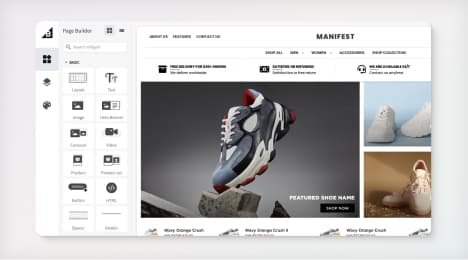
Watch Our Product Tour
See how BigCommerce helps you build and manage your online store with ease.
- Ecommerce Insights

6 Key Steps to Launch Your Online Store
Explore our Launch Foundations series to get your BigCommerce store up and running quickly.
BigCommerce helps growing businesses, enterprise brands, and everything in-between sell more online.
What is fair use, and why is it important?
A fair use is the copying of copyrighted material for the purposes of comment, criticism, or parody.
In a nutshell, a fair use constitutes copying of material for a “transformative” reason. In layman’s terms, it determines whether the material you’re borrowing from someone else has been used for a fair purpose. Or else, if your use breaks copyright or other laws.
Fair use applies to all sorts of media:
Photos
Other images (cartoons, digital art, paintings, etc.)
Articles
Fictional writing
Non-fiction writing
Book reviews
Biographical work
Software code
In short, anything that involves somebody’s ideas, creativity, or hard work comes under fair use legislation.
Four main factors determine whether a case of transformative use is a fair one. Read on to find out all about them!
The Purpose and Character of the Use
The fair use statute dictates that nonprofit or educational uses are favored more over commercial ones. This means that to constitute a fair use of copyrighted material, the transformed work would ideally be for individual or personal use.
The character of the use is how the material is incorporated into the new work.
Is it simply copy-pasted over? Or is it a well-embedded quote?
Examining the character of the material can help to determine whether or not the use of it is a fair one.
Something else to consider here is the extent to which the use of copyrighted material adds to the work. Has it given it new meaning?
For example, say you’re a cloud architect.
You want to create new cloud software that can be integrated into lots of different platforms, for marketing or collaboration. So you look up “what is cloud integration?” and apply some of what you learn in the building of your software.
Since you’re using someone else’s ideas in a transformative way, that’s all covered under the statute of fair use. However, if you were to simply plop somebody else’s code into your own product, or plagiarize their writing about it, you’d risk breaking the rules of fair use.
The Nature of the Copyrighted Work
This factor is all about where you’re getting your material from.
Courts are usually more protective of creative works, such as art, music, films, or poetry, than they are of non-fiction works. This is something important to consider when deciding whether or not to use copyrighted material.
Another aspect to think about is whether the material you’re looking at is a primary source. Are you taking the words directly out of someone’s mouth? Are you considering transforming someone’s core ideas? Or is it common knowledge that you’re getting from a secondary or even a tertiary source?
Weighing the risks here can dictate how your platform looks later.
The Amount or Substantiality of the Portion Used
The law does not state an exact quantity of copyrighted material you can use fairly, but generally speaking, the more you use, the less likely it is to constitute fair use.
For example, if you lift entire sections of writing from a medical article, that’s probably not going to fly as a fair use. You’ve taken a substantial amount of material from a source that isn’t yours and essentially stolen their ideas in the process.
From a moral point of view, it’s dubious at best. From a legal standpoint, it’s even worse. You could be opening yourself up to all sorts of legal challenges, and if found guilty you’d be subject to a fine or even prosecution.
Best to avoid it, we think.
Something else to consider here is what is termed the “qualitative” amount of copyrighted material used.
What this means is: Have you used what is considered the “heart” of the work?
Going back to our medical article example, if you were to take a very small section, but one that summarized the entire paper, you’d be subject to the same punishments as if you had lifted a large but inconsequential section.
So, be aware of the content of the material you’re planning to use.
The Effect of the Use on the Potential Market for or Value of the Work
This is an extremely wordy title for what is actually quite a simple concept.
Essentially, how much revenue or profit that you make off of copying material can dictate whether or not it constitutes fair use.
For example, you want to write a book about the best RPA tools. You lift sections of code and copyrighted text from another source.
Your book ends up becoming an international bestseller and making you a ton of money. That’s great for you, but, since you used ideas that weren’t originally your own, you’re at risk for experiencing the same nasty consequences we mentioned above.
The bottom line is, if you’re going to be making a profit off of someone else’s work, we urge you to reconsider. Not only is it morally gray and generally a bit of a no-no, but you’re also making yourself vulnerable to lawsuits and prosecution.
Conclusion
You’re allowed to use copyrighted material for transformative purposes, but be careful of how much you take and what ideas you might be accidentally stealing. If you keep that in mind, you’ll be fine.
BigCommerce helps growing businesses, enterprise brands, and everything in-between sell more online.
Start growing your ecommerce business even faster.
High-volume or established business? Request a demo